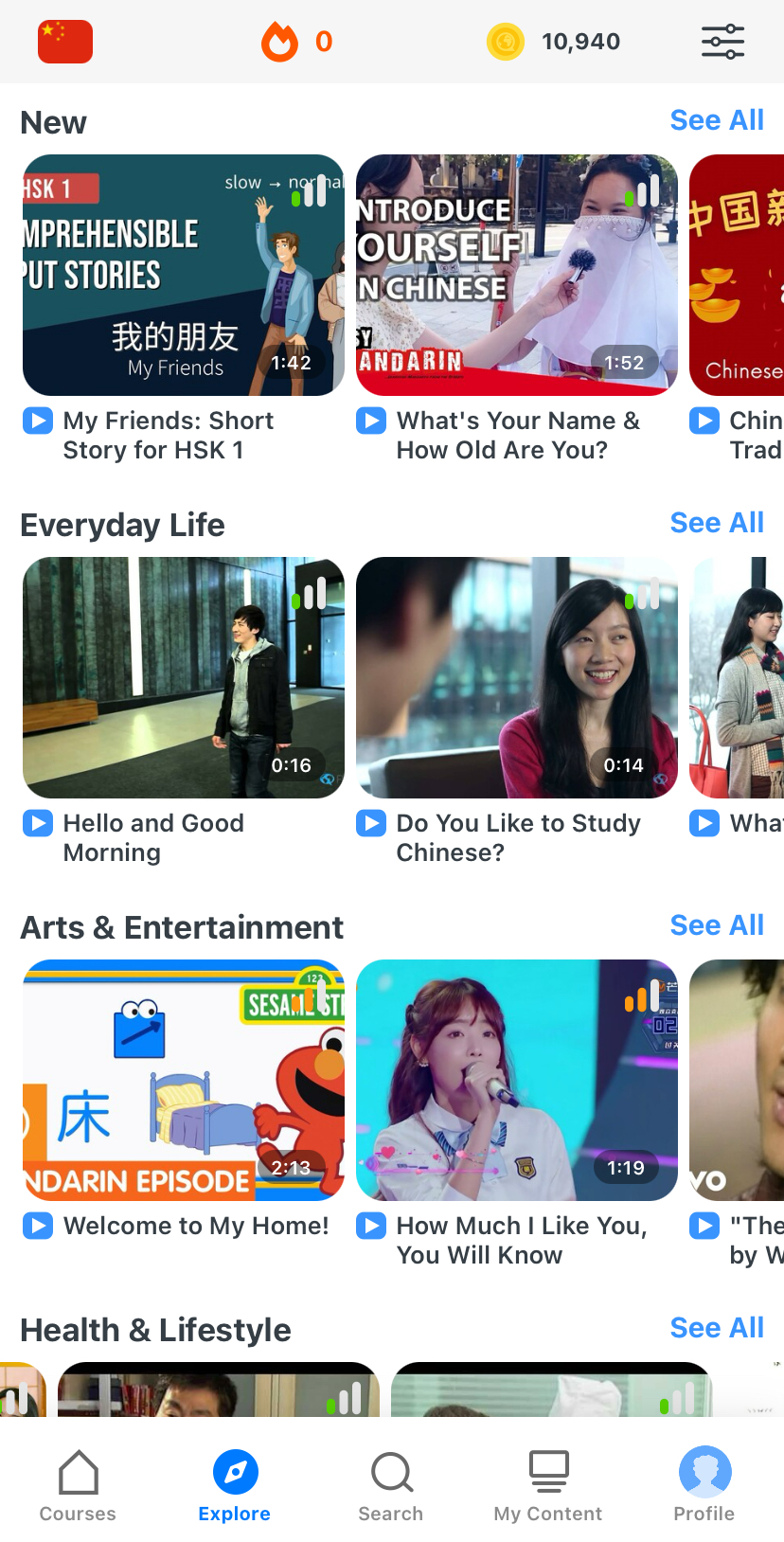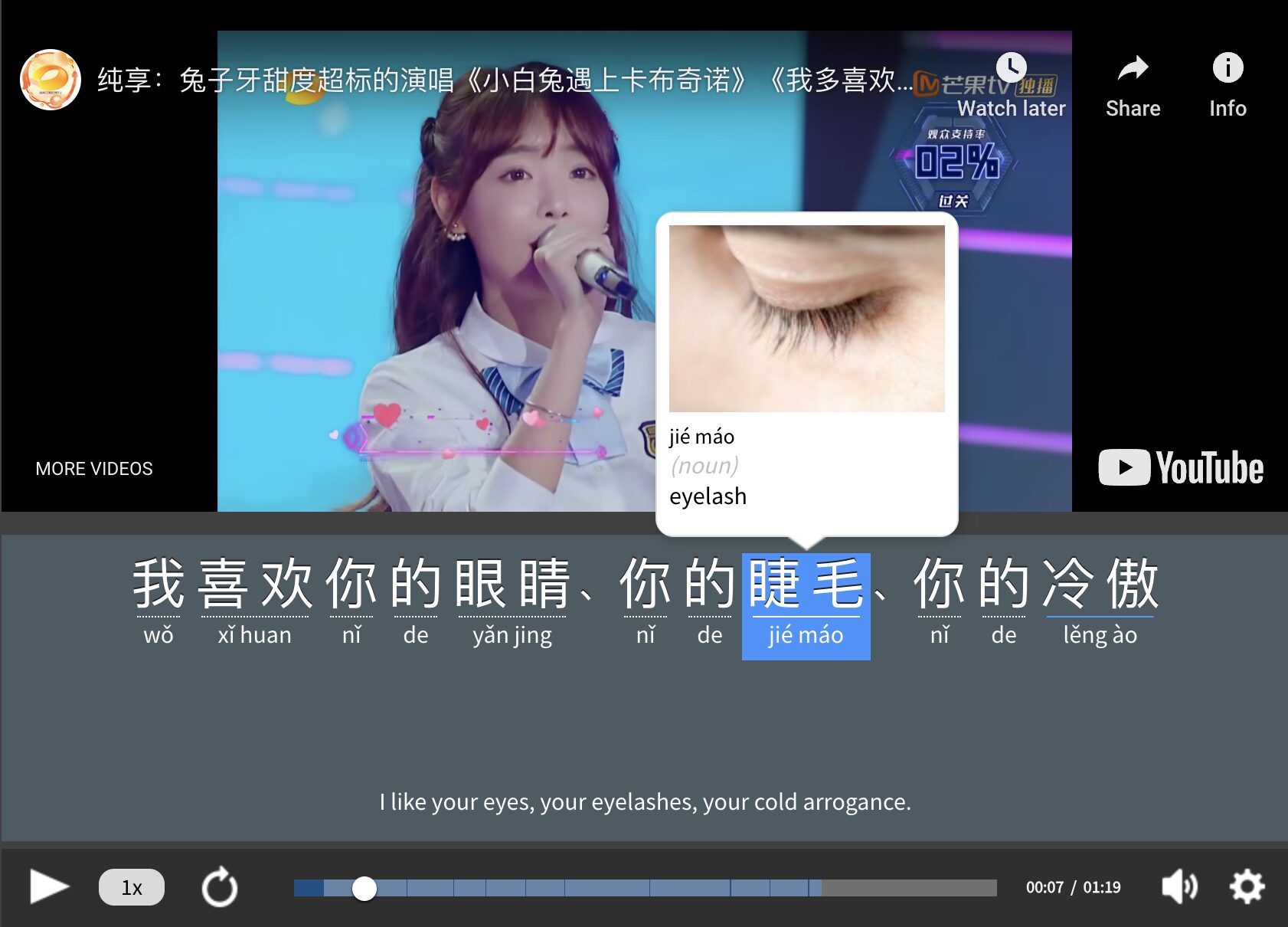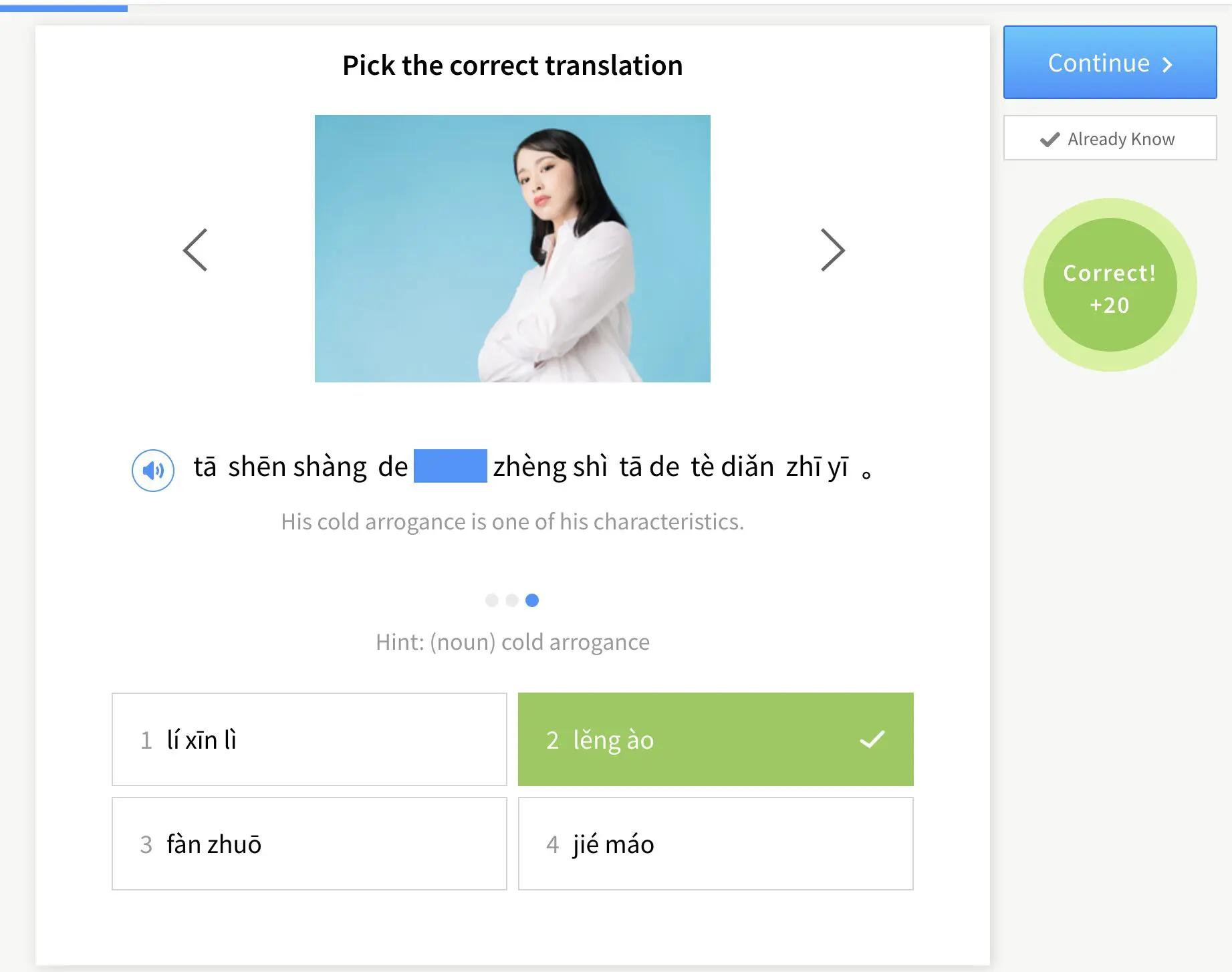3 Methods to Learn Chinese with Subtitles (Plus Resources)

Subtitles translate words from a different language into the language you understand. They clarify words you may not have heard due to fast-paced dialogue and they allow you to pay attention to how words are written as they’re being spoken.
Here are some great resources and tips to help you get started on using subtitles as a way to learn Chinese.
Download: This blog post is available as a convenient and portable PDF that you can take anywhere. Click here to get a copy. (Download)
1. Put the Subtitles in Only One Language
If your favorite streaming platform only has subtitles available in one language, think about your level and what you want to gain from your movie-watching experience.
Do you want to become more familiar with phonemes, expand your vocabulary or practice reading? Subtitled movies can help you master any of these objectives.
Here are a few subtitle settings to figure out which one is the best for you.
Chinese movies with English (or native language) subtitles
This is great for beginners. Native language subtitles allow viewers to understand what’s happening in the movie while being exposed to the cadences of a new language. And its simple phrases and mannerisms.
Keep a notebook handy to write down common phrases you encounter as you watch.
I suggest using pinyin because this is often easier than writing out the characters, especially since you don’t want to miss too much while you’re watching. Then after the movie is over, you can go back and write out the characters.
Chinese movies with Chinese subtitles
This is perfect for intermediate to advanced learners.
If you already have a decent vocabulary base and are able to understand day-to-day conversations, Chinese subtitles allow you to expand your vocabulary, practice reading and improve your writing skills.
Keep a dictionary nearby while you’re watching so you can look up any unfamiliar words and take note of them.
English (or native language) movies with Chinese subtitles
This is an option suitable for learners at any level. Chinese subtitles on a native language movie or TV show provide a more targeted outlet for learning new Chinese vocabulary and reading Chinese characters.
However, it’s imperative to focus on the subtitles and purposefully search out any unfamiliar words. Since the dialogue is in your native language, you’ll already have an idea of what those words mean just from watching the movie.
2. Mix It Up and Flip-flop Between Subtitles
Some streaming platforms offer subtitles in multiple languages but you can only select one at a time. However, with a selection of multiple languages, you have the additional capacity to switch between them any time you like.
Challenge yourself to watch one scene entirely in Chinese
You’re not ready to see an entire film with Chinese subtitles because you don’t want to be completely lost. I get it. So take it slow and watch the next scene with Chinese audio and subtitles and see how much you understand.
Or you can rewind the movie and watch that killer action scene again and try to say the lines along with the characters (fight moves are optional). Do this as often as you like throughout the movie until you’re ready to go without subtitles.
Another option is watching a scene and translating the words at the same time. Then go back to see how your translations fared against the given subtitles. Sometimes you’ll be right on the mark, sometimes you’ll be way off. But all that matters is the practice you’re getting.
Switch the subtitles within a scene
If you’re watching Chinese movies with native language subtitles, you can switch to Chinese subtitles to see how a specific word is written. In Chinese, there are a lot of characters whose pronunciation is exactly the same but are actually completely different words.
Therefore, switching to Chinese subtitles can help you clarify very quickly which character the sound of a word corresponds to. This is really nice for beginner to intermediate learners because you automatically have a translation into your native language as you watch.
Also, you still have an easy way to augment your vocabulary and distinguish between similar-sounding characters in Chinese.
If you’re using this method, you can switch to your native language when you’re uncertain about a word or phrase. This is useful for intermediate to advanced learners because it forces you to listen and read in Chinese. But instead of looking up unknown words in a dictionary, switching the subtitles will give you a quick translation.
3. Use Double Subtitles
Dual subtitles are a format that displays both Chinese subtitles and subtitles in your native language at the bottom of the screen.
This is the most useful format for learning a new language. Dual subtitles allow you to understand the meaning of what’s being said while introducing both oral and written Chinese. It’s suitable for learners at all levels but is especially helpful for beginners.
Pause frequently to focus on new or interesting vocabulary
Taking note of words you don’t recognize is much easier since you have both the words (Mandarin characters) and native language translation on the screen. Therefore, you can simply pause to jot down the unknown word or phrase, its definition in your own language and the context in which it was used. This will be very useful in helping you understand how to use those words yourself in daily conversation.
Resources for Finding Media with Chinese Subtitles
- Netflix — Netflix has a selection of Mandarin Chinese movies and TV dramas with English, Japanese, Korean, simplified Chinese and traditional Chinese subtitles. If you’re located in a country that primarily speaks Chinese, most content on Netflix will have the option of Chinese audio and subtitles. This means you can watch English movies with Chinese audio and Chinese subtitles.
- FluentU — This program uses bite-sized clips of native content to teach Mandarin Chinese, complete with effective learning tools such as interactive subtitles, downloadable transcripts, flashcards and personalized vocabulary quizzes.
FluentU takes authentic videos—like music videos, movie trailers, news and inspiring talks—and turns them into personalized language learning lessons.
You can try FluentU for free for 2 weeks. Check out the website or download the iOS app or Android app.
P.S. Click here to take advantage of our current sale! (Expires at the end of this month.)
You can take a look at our YouTube video below to see how our interactive subtitles work:
- Amazon Video — Amazon provides Mandarin Chinese movies and TV shows with English subtitles. Just typing in “Chinese movies with English subtitles” brings up about 35 different titles from horror to comedy to sci-fi.
- Hulu — This service allows you to stream all those Chinese films and TV shows with English subtitles directly on any device.
- YouTube — YouTube has Chinese movies and TV shows with dual subtitles as well as single-language subtitles. You can search for the show you want to watch with “English sub,” “traditional Chinese sub,” “Malay sub” or subtitles in whatever language you desire. To start you off, you might consider a drama that’s pretty popular in China right now, “Eternal Love,” a fantasy romance replete with gods and demons.
Watching movies or TV shows with subtitles turned on is a less tedious way of learning a language.
Sometimes, you may not even feel like you’re actively learning! However, by constantly reading and listening in Chinese, you’re instinctively absorbing the subtleties of the language—all while being entertained!
Download: This blog post is available as a convenient and portable PDF that you can take anywhere. Click here to get a copy. (Download)
And One More Thing…
If you’re like me and prefer learning Chinese on your own time, from the comfort of your smart device, I’ve got something you’ll love.
With FluentU’s Chrome Extension, you can turn any YouTube or Netflix video with subtitles into an interactive language lesson. That means you can learn from real-world content, just as native Chinese speakers actually speak.
You can even import your favorite YouTube videos into your FluentU account. If you’re not sure where to start, check out our curated library of videos that are handpicked for beginners and intermediate learners, as you can see here:
FluentU brings native Chinese videos within reach. With interactive captions, you can tap on any word to see an image, definition, pronunciation, and useful examples.
You can even see other videos where the word is used in different contexts and add new words to your flaschards. For example, if I tap on the word 喝 (hē), this is what pops up:
Want to make sure you really remember what you've learned? We’ve got you covered. Practice and reinforce the vocab from each video with learn mode. Swipe to see more examples of the word you’re learning, and play mini-games with our dynamic flashcards.
The best part? FluentU tracks everything you’re learning and uses that to create a personalized experience just for you. You’ll get extra practice with tricky words and even be reminded when it’s time to review—so nothing slips through the cracks.
Start using the FluentU website on your computer or tablet or, better yet, download our app from the App Store or Google Play.
Click here to take advantage of our current sale! (Expires at the end of this month.)












